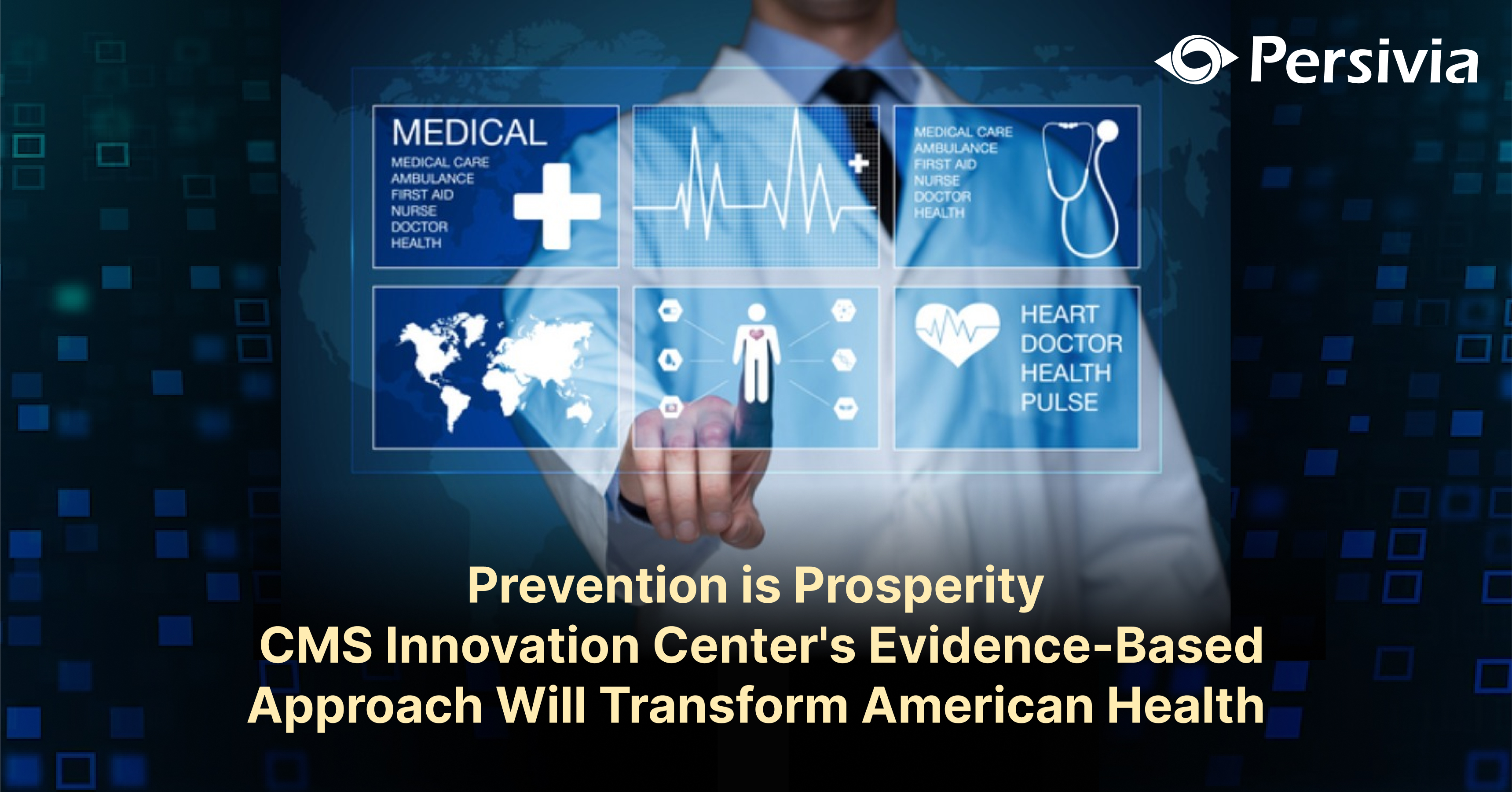American healthcare stands at a turning point. For years, we’ve excelled at treating illness while struggling with rising costs and chronic disease. Clinical decision support systems are changing how we approach healthcare, moving towards evidence-based care. The CMS Innovation Center 2025 “Make America Healthy Again” strategy recognizes that true transformation requires shifting from treatment to prevention.
The benefits go far beyond better health. When we prevent disease, everyone wins. Healthcare costs come down, productivity goes up and our economy grows stronger. And taxpayer dollars stretch further, protecting vital programs for future generations. Prevention isn’t just a healthcare strategy—it’s a path to national prosperity.
The Evidence Behind Evidence-Based Care Prevention
The case for prevention isn’t theoretical—it’s proven through 15 years of Innovation Center model testing. Every dollar invested in prevention yields substantial returns in healthcare savings. Comprehensive prevention programs dramatically reduce disease risk. Evidence-based preventive services save lives at a fraction of treatment costs.
CMS Innovation Center – Core Prevention Strategies in the 2025 Framework
The 2025 strategy adopts a comprehensive approach across the health continuum:
- Primary Prevention: Stopping Disease Before It Starts
The most cost-effective prevention stops disease processes before they begin. The Innovation Center prioritizes models that incentivize lifestyle optimization, remove environmental health hazards, strengthen vaccination programs, and promote mental health resilience. - Secondary Prevention: Early Detection and Intervention
Early identification improves outcomes while reducing costs. The Innovation Center accelerates advanced screening protocols, early intervention programs, and technologies that enable earlier detection while removing financial barriers to screening. - Tertiary Prevention: Managing Chronic Conditions
For Americans with chronic conditions, preventing complications represents a critical opportunity. The Innovation Center supports self-management education, remote monitoring technologies, enhanced care coordination, and medication optimization.
These layered strategies protect Medicare and Medicaid trust funds while improving quality of life for beneficiaries.
Financial Mechanisms Supporting Prevention
Converting prevention from concept to reality requires aligned financial incentives. The Innovation Center incorporates risk-sharing models where providers assume meaningful downside financial risk, with prevention outcomes directly impacting financial performance.
Refined benchmarking approaches properly value prevention through multi-year performance periods that capture long-term benefits. When providers assume financial risk for total cost of care, prevention guided by intelligent systems becomes financially strategic.
Empowering Providers to Prioritize Prevention
Even with aligned incentives, providers need practical support through clinical decision systems that make prevention actionable. Future accountable care models incorporate preventive metrics with appropriate financial rewards, supported by decision support tools that track performance and suggest improvements. The healthcare workforce receives prevention-focused training and sophisticated tools that bring current evidence directly into clinical workflows.
Digital infrastructure accelerates implementation through predictive analytics and patient engagement platforms built on clinical decision support architecture. Streamlined administrative processes remove friction from prevention delivery, ensuring the transition is practical and sustainable through intelligent workflow optimization.
Patient Empowerment Through Prevention
True prevention requires active patient participation. Culturally tailored health education improves decision-making. Technology extends prevention beyond clinical settings through mobile applications and wearable devices.
Community-based programs create supportive environments for healthy choices. Economic alignment extends to patients through reduced cost-sharing for preventive services and wellness incentive programs.
A Partner in Prevention: Persivia’s AI-Powered Digital Health Platform
Persivia’s CareSpace® digital health platform leverages AI at its core, employing prescriptive, descriptive, and predictive analytics alongside advanced machine learning models to transform healthcare delivery from reactive treatment to proactive prevention. The platform aggregates information from disparate sources—EMRs, HIEs, HRAs, labs, claims data, SDoH, HL7 data, patient-reported data, consumer data, and diagnostic device data—into a single longitudinal patient record, then applies sophisticated algorithms to identify patterns, predict risks, and prescribe evidence-based personalized interventions before clinical symptoms appear.
The clinical decision support system within CareSpace® has matured over 20 years with the Soliton engine, that supports a very large range of clinical scenarios and workflows without overburdening users.
The Soliton® – AI Engine accesses evidence-based knowledge from thousands of sources and uses the resulting insights to continuously evaluate all the data known about each individual patient to generate alerts and treatment guidelines that are specific to that patient at that point in time, helping improve clinical quality scores. CareSpace®’s AI-powered capabilities enable truly proactive care by predicting patient behaviors, automating preventive interventions, and delivering intelligent insights during patient interactions, while machine learning algorithms continuously analyze patient trajectories to calculate risk scores and predict future health events.
These powerful insights are seamlessly delivered to providers through CareTrak®, which reimagines the EHR experience by integrating with all major EHR systems through bidirectional connectivity, bringing real-time, actionable recommendations directly into existing clinical workflows.
Table of Contents
